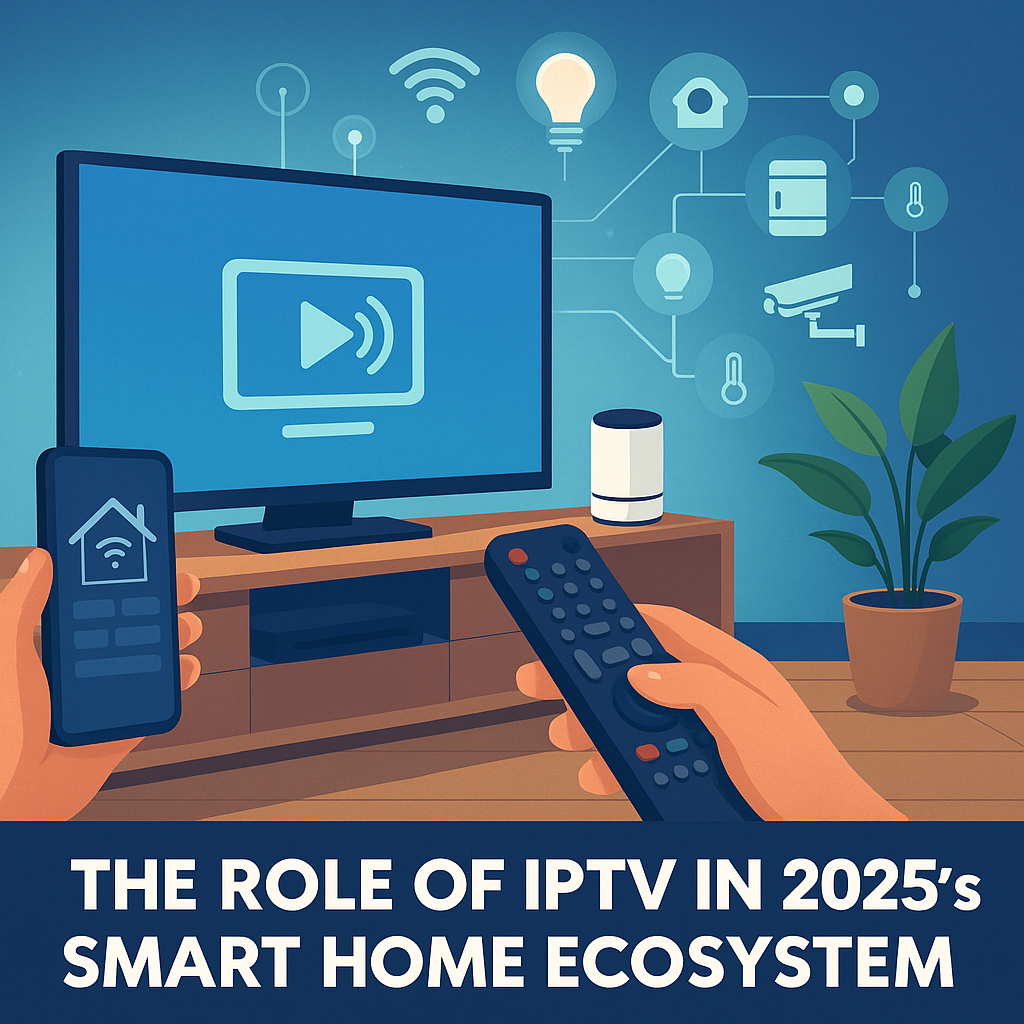
The concept of the “smart home” has evolved far beyond connected thermostats and voice assistants. In 2025, IPTV (Internet Protocol Television) has become a central player in smart home ecosystems. With seamless integration across devices, data-driven personalization, and smart controls, IPTV is no longer just a way to watch TV—it’s an intelligent hub for digital entertainment and automation. But what does this transformation look like? And why is IPTV now essential in every smart home setup?
1. What Is IPTV and How It Works in Smart Homes
IPTV delivers television content via internet protocol, bypassing traditional cable and satellite systems. Instead of broadcasting, content is streamed on-demand through private networks or the public internet.
In smart homes, IPTV doesn’t operate in isolation—it connects with other systems like:
- Smart speakers (Amazon Echo, Google Nest)
- Voice assistants (Alexa, Siri, Google Assistant)
- Smart TVs, tablets, and smartphones
- Lighting systems and environmental controls
- Home security and camera systems
For example, you can use voice commands to pause a live IPTV stream, dim the lights, and activate the “movie mode” setting—all from your couch.
2. The Benefits of IPTV in a Smart Home Setting
✅ Centralized Control:
IPTV platforms integrate with smart hubs, allowing users to manage media playback, schedules, and preferences via a single app or command center.
✅ Multi-Device Compatibility:
IPTV services are now optimized for various devices—smart TVs, smartphones, tablets, VR headsets, and more—ensuring entertainment follows users from room to room.
✅ Voice-Activated Convenience:
Instead of scrolling through menus, users can say, “Play the latest episode of [show] on the living room TV,” and IPTV does the rest.
✅ Energy Efficiency:
With scene automation, IPTV can trigger energy-saving modes. For instance, if no movement is detected, the system can turn off the TV or lower its brightness.
3. IPTV as a Gateway to AI-Driven Personalization
Modern IPTV systems go beyond streaming—they gather data about viewing habits, preferred genres, and even time of day you prefer certain content. In 2025, AI leverages this data to:
- Automatically recommend shows
- Adjust lighting and sound for preferred ambiance
- Schedule “quiet time” or “kids mode” with parental controls
- Combine content suggestions with personal calendars (e.g., suggesting yoga videos in the morning)
This fusion of IPTV and AI is redefining what “personalized entertainment” really means.
4. Integration with IoT (Internet of Things)
IPTV works hand-in-hand with IoT in today’s connected homes. Let’s break it down:
- Smart Lighting: Your IPTV interface adjusts room lighting based on content type—warm light for romantic films, cool tones for thrillers.
- Smart Security: IPTV displays real-time feeds from connected security cameras, even overlaying alerts while watching live TV.
- Home Automation: IPTV can be used to set up routines. For instance, watching the news in the morning triggers coffee brewing and opens the blinds.
The seamless interaction between IPTV and IoT creates a harmonious, immersive environment.
5. Smart Advertising and User Experience
Marketers are now leveraging IPTV data to serve hyper-relevant, non-intrusive ads. In a smart home:
- Ads can appear at optimal times based on your schedule
- Localized offers or promotions can be geo-targeted
- Ads can be skippable, minimized, or personalized based on user interaction
This results in a better user experience—more relevant, less disruptive.
6. IPTV Security and Privacy in Smart Homes
With so many connected devices and personalized data, privacy is critical. Leading IPTV providers are implementing:
- End-to-end encryption
- Two-factor authentication
- Data anonymization techniques
- Private viewing modes
As IPTV platforms become gateways to the smart home, their responsibility for secure communication grows.
7. IPTV’s Role in Future-Proofing Your Home
Smart homes of the future are being built with IPTV at their core. Here’s why:
- Scalability: IPTV services adapt easily as new devices and features emerge.
- 5G Compatibility: With blazing-fast speeds, 5G enhances IPTV’s performance for 4K/8K streams, VR content, and real-time control.
- Cloud-Based Architecture: Updates, backups, and content libraries are managed remotely—making IPTV effortless to maintain.
Investing in IPTV today ensures your home tech stays ahead of the curve.
8. IPTV and Sustainability in 2025
Environmental concerns are reshaping how we think about technology. IPTV supports sustainability by:
- Reducing the need for physical media (DVDs, cables)
- Allowing smart control of energy consumption
- Enabling digital, paperless content distribution and advertising
In many smart homes, IPTV is a cornerstone of eco-friendly living.
Conclusion
In 2025, IPTV isn’t just a streaming service—it’s the backbone of smart home interaction. From personalized content to home automation, from AI integration to sustainability, IPTV is reshaping how we live, watch, and connect.
Whether you’re upgrading your living room or building a fully connected smart home, IPTV is the tech you can’t afford to ignore.
